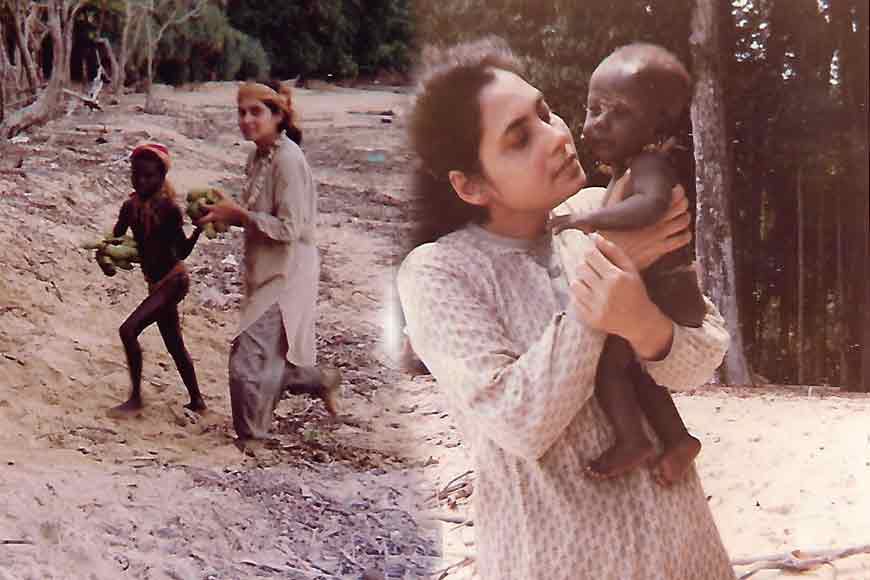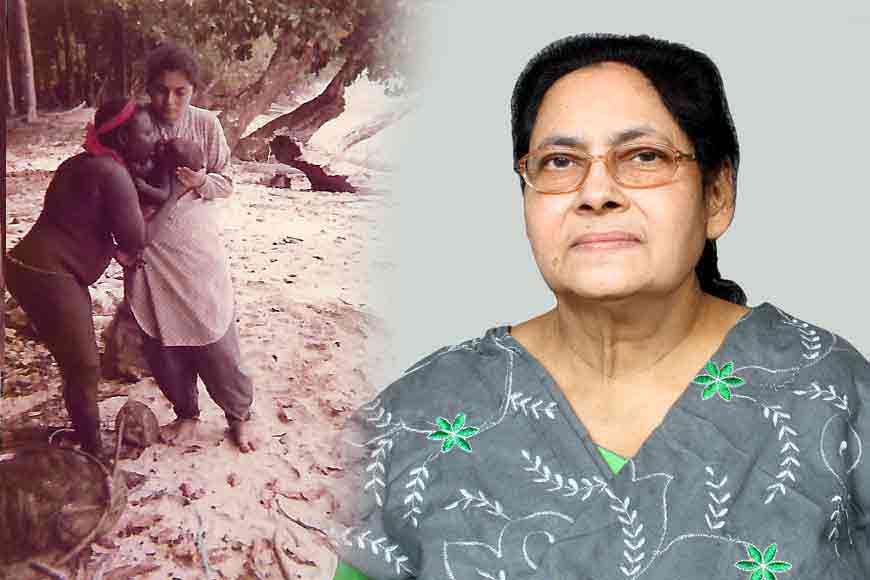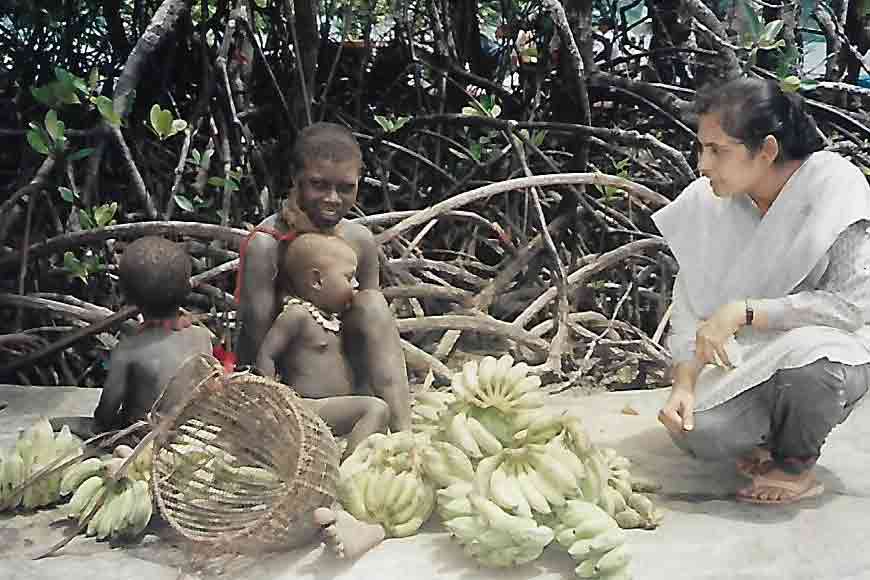How Dr Madhumala Chattopadhyay reached out to hostile tribes of Andamans!

Dr Madhumala Chattopadhyay was the first woman anthropologist who became the ‘milae’ (friend) of the Sentinelese tribe of Andamans, who are otherwise known to be extremely hostile. For years, she pursued her study on them and other such tribes of the Andaman and Nicobar Islands, and in the process not only did she share an interesting bond with the Sentinelese but even succeeded in communicating with this otherwise non-communicative tribe. This was more than two decades ago. An exclusive interview with Dr Chattopadhyay on her fascinating journey with this only surviving tribe of the world who have repeatedly shunned the civilised world for ages.
• When and how many times did you try to get in touch with the Sentinelese?
I went to the Andamans as a research associate of Anthropological Survey of India. I was posted there for seven years from 1989-1996. I went there to observe and study the tribe, their food habit, way of life and culture as a part of contact expedition. It was then, that I had the privilege of interacting and connecting with all the primitive tribes of Andamans, including the Sentinelese.
• What was your experience with them?
The experience was simply overwhelming. To me, they are more than my relatives and close friends. We in the modern world think that coming from a civilized society, we are observing or studying their behavioural pattern, but in reality, they are the ones who study us and have the ability to analyze our intentions and respond accordingly. If we underestimate them or try to intrude into their personal space forcibly, they understand it very well. If they do not like your approach, they will simply not cooperate. They will then hide deeper inside the forests. However, if they like you, they will take you to the interiors of their island and treat you respectfully. We used to exchange fruits with each other and that’s how we gained their trust. As part of my study, I often had to take their measurements, their blood samples and ask several questions. If I missed out anyone in the process, they would come and want to answer voluntarily. If you love them, they are friendly and will do anything to protect you. Such is their warmth.
• Do you feel a tribe like Sentinelese should be left alone? If so why?
Yes, they need their own space to survive. It is important for us to connect and reach out to them. But at the same time, one must make sure that we are not disturbing them or harassing them in the process. They get extremely perturbed and paranoid. Their basic need is food and shelter. Most importantly, one must not try to impose the concept of religion on them. The tribes also do not like the concept of clothing and prefer living freely amidst nature. The foreigners at a point of time used to capture their intimate moments behind their lens without their knowledge and used to sell these photographs at high prices abroad, misrepresenting their culture. Without emphasizing on their culture, at times some of these photographs were even used to make porn films! We must respect their privacy and let them be the way they are!

• How have the Andaman tribes survived against all odds?
The fight of the tribes for survival has been an enormous struggle. During the British rule in India, the British strived to reach out to ten tribes but they refused vehemently. The Battle of Andaman in 1859 which broke out between British and Indians had killed half of the population of Andaman. The tribes fought with arrows while the British resorted to guns. The tribes had various subgroups. Majority of them were wiped out. The population came down from 3000 to 19. Some of them were taken to homes where they contacted measles. The British exploited the womenfolk and inflicted diseases like syphilis upon them. Their genetic identity was lost even if they survived. Some children succumbed to epidemics. The tribes through the ages tried hard to survive in their own way and stood against exploitation, intrusion and a lot more. Their population dwindled fast.
• What kind of existential crisis are they facing today?
The tribes are living under constant threat of intrusion of outsiders, settlers and the church. At a time, certain ships used to come from islands of Indonesia and Malaysia and take away the women to unknown lands, treat them as slaves and exploited them. These women could never return to their native land. When it comes to health too, the scenario is terrible. They do not even have a doctor. Even if you give medicines to them, they cannot use it in a proper way. Since they are not literate, they have the medicines at the wrong time or also indulge in over-consumption which consequently has dire impacts on their health. Their plight is simply endless.
• Where do they get food from? How much knowledge do we have about their language and rituals?
The tribes resort to forest products and marine animals as a source of food. Besides, they also hunt wild boars. The tribes have a separate allotted land for food resource. If mainland settlers encroach on their territory, they would have to share their food source. There is a buffer zone where there is police protection to protect the settlers and keep the tribes away. Despite the restriction, the settlers often encroach in their territory for the purpose of hunting. This is when tribesmen might kill the intruders. The people of the civilized society hardly know anything about their language. Each tribe has a distinctive language. There are certain common words from Hindi, Bengali and Oriya used by Jarwa and Sentinelese tribes. When I went there, I had no idea about their language. I learned it while interacting with them. When it comes to rituals, they do not worship any deity. They eulogize different forces of nature like the sky and the sea. On a full moon night, they used to sing throughout the night. Two couples start singing and when they get tired, the others start singing. When their close ones die, the tribes make a wooden replica of them and offer food and water to them.

• What is your take on the recent event of the missionary youth trying to reach the island of the Sentinelese?
The tribes cannot relate to the concept of religion. To them, Hinduism, Islam or Christianity is all Greek. Without even understanding their habitat, practices, ethos and beliefs, how can one try to propagate their religion among the tribe? Without extending your friendship, how can you force them to inculcate your religious beliefs? Can it happen in a day? Everything takes time. They are not robots. It is likely for anyone to get aggressive. John Allen Chau was not the first one to enter into their territory unethically. Why did he try to bribe the fisherman instead of taking permission from the Andaman government? Will you let a stranger enter the inner sanctum of your house in the middle of the night without your permission? Will you not retaliate if the stranger forces himself into the house? Likewise, it is very likely that the Sentinelese got violent because they are intelligent enough to decipher your agenda very well. The tribes trust people of Indian origin but not the white-skinned foreigners, considering what they have done to them in the past colonial era. The Sentinelese tribe could not be contacted before January 4, 1991 unlike the other tribes. They have stayed in their isolated cocoons for years from the Palaeolithic age. They are still protective about their territory and tend to shun human contact. They are under the impression that we will kill or harm them. So, it is imperative that we respect their sentiments and be more sensitive towards them.









